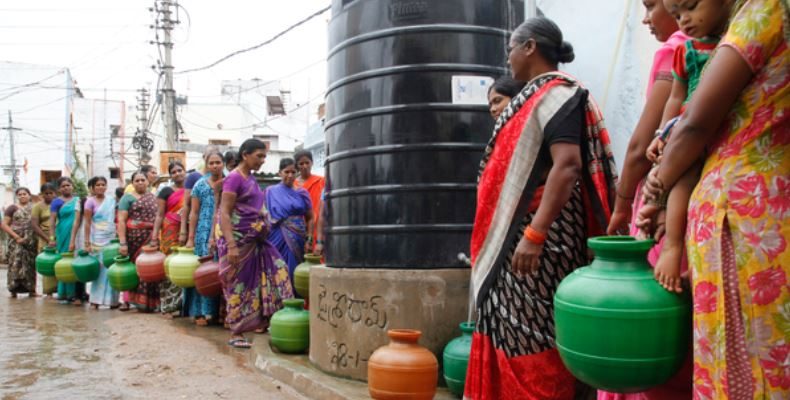NEW YORK/ MARCH 21, 2018 – While Cape Town races to avoid ‘Day Zero,’ when taps will run dry, a new WaterAid report reveals millions around the world already face these conditions daily.
WaterAid’s report, State of the World’s Water 2018: The Water Gap, reveals that the number of people living without access to clean water is rising. Uganda, Niger, Mozambique, India and Pakistan are among the countries where the highest percentage or largest number of people cannot easily get clean water.
The report, released on March 22 for World Water Day, also includes new data on the sizeable gap between rich and poor when it comes to water access.
Some 844 million people are now struggling to access life’s most essential requirement – an increase of nearly 200 million from last year. The increase reflects a stricter definition of access by the Unicef-WHO Joint Monitoring Programme. Access is now defined as being able to collect water within a 30-minute round trip of home.
WaterAid’s CEO, Sarina Prabasi, said:
“The bottom line is, we aren’t making progress fast enough. It’s shocking that 60 percent of the people on this planet are living in water stressed areas, a number that’s only expected to increase. We must do better. Without water and sanitation, none of the goals to alleviate poverty, improve health and create a fairer and more sustainable world, will be achieved. Water as a human right that can no longer be ignored.”
Consider this: a woman collecting the UN-recommended amount of 50 liters per person for her family of four from a water source 30 minutes away would spend two and a half months a year on this task. This prevents her from earning an education, earning a living, and even from political participation. In turn, it limits economic growth worldwide.
These new data are particularly important as the White House is proposing a 30% cut to funding for USAID and the Department of State as requested in the President’s Fiscal Year 2019 budget. Instead of weakening USAID and the US diplomatic corps, WaterAid’s report is a call to action for Congress as they prepare their own FY19 funding priorities, which must include safe drinking water, sanitation and hygiene. Faster progress on all three will save lives, boost development and change the lives of billions of people living in extreme poverty globally.
The Administration must fully implement the Senator Paul Simon Water for the World Act and its own Global Water Strategy, fulfilling its commitment to target resources to the poorest of the poor, those who make up the 884 million people without clean water today.
Lisa Schechtman, U.S. director of policy and advocacy at WaterAid, added:
“We are at a critical juncture in the fight to get clean water, decent sanitation and good hygiene to people across the world. Current efforts by the Administration to restructure USAID and restrict global investments in areas like clean water run counter to public opinion as well as long-standing commitments to prioritizing the water crisis. We must all hold the United States accountable for its own promises to people at home and abroad.”
This World Water Day, WaterAid is calling for the U.S. government to fully fund the foreign aid budget, including the State Department and the U.S. Agency for International Development (USAID), which work to eradicate poverty, fund vital water and sanitation programs and uphold our reputation as a nation of prosperity and goodwill.
Highlights from the report:
– Eritrea, Papua New Guinea and Uganda are the three countries with lowest access to clean water close to home, with Uganda a new addition to the list this year at 38% access.
– Mozambique ranks fourth in the table of countries making greatest progress in water provision, but remains 10th in the world for lowest access to water. Its capital city, Maputo, is currently experiencing severe water shortages and is now preparing for rationing.
– Almost every country struggling to provide its people with clean water also has a huge gap in access between rich and poor. For instance, in Niger, only 41% of the poorest people have access to water, while 72% of its wealthiest do. In neighboring Mali, the gap widens to 45% and 93%, respectively.
– India, though it still home to the most people without clean water, is also near the top of the list for most people reached: more than 300 million since 2000—nearly equivalent to the population of the United States.
For more information, visit http://www.wateraid.org/us.

